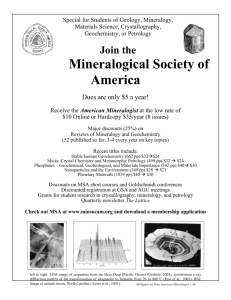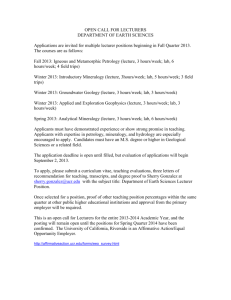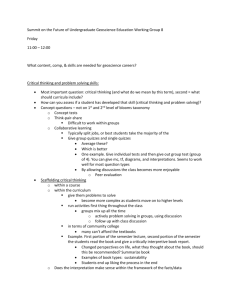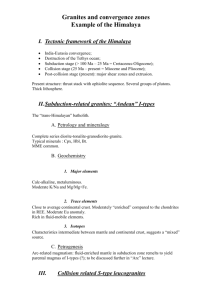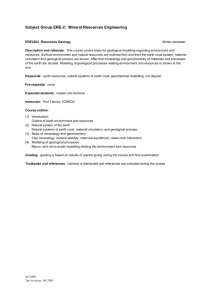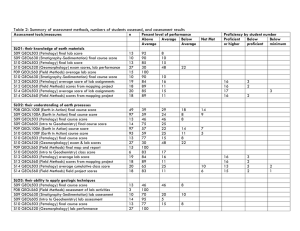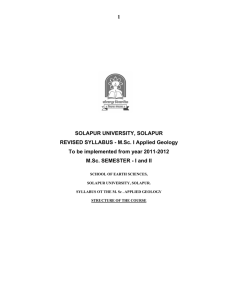Document 12891362
advertisement
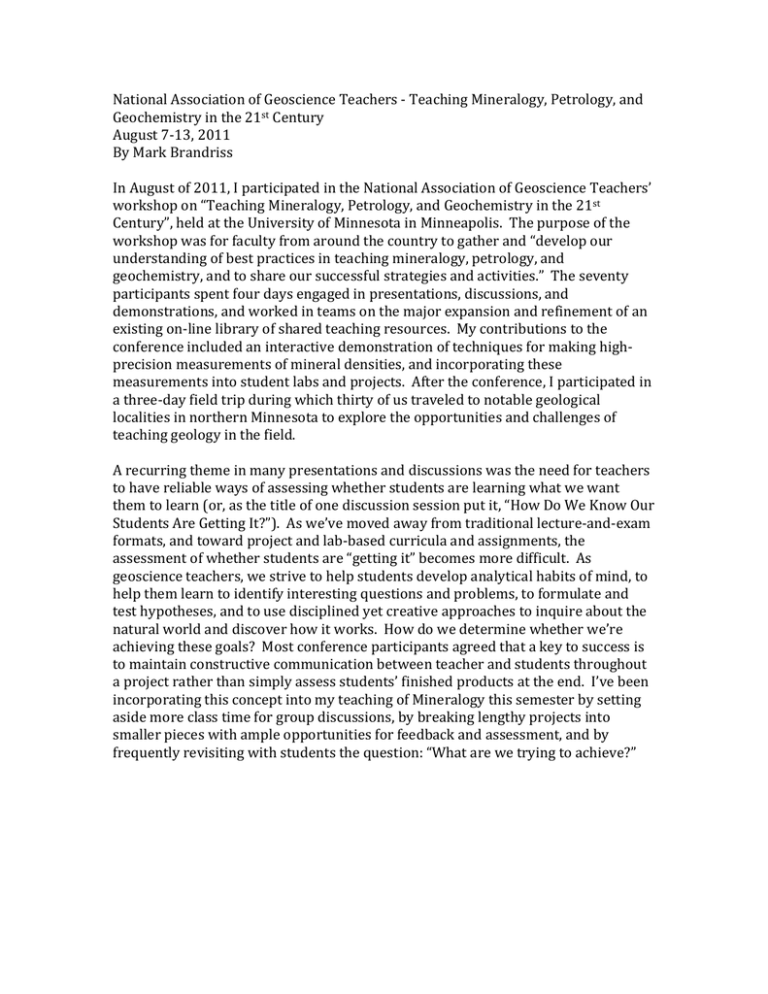
National Association of Geoscience Teachers -­‐ Teaching Mineralogy, Petrology, and Geochemistry in the 21st Century August 7-­‐13, 2011 By Mark Brandriss In August of 2011, I participated in the National Association of Geoscience Teachers’ workshop on “Teaching Mineralogy, Petrology, and Geochemistry in the 21st Century”, held at the University of Minnesota in Minneapolis. The purpose of the workshop was for faculty from around the country to gather and “develop our understanding of best practices in teaching mineralogy, petrology, and geochemistry, and to share our successful strategies and activities.” The seventy participants spent four days engaged in presentations, discussions, and demonstrations, and worked in teams on the major expansion and refinement of an existing on-­‐line library of shared teaching resources. My contributions to the conference included an interactive demonstration of techniques for making high-­‐ precision measurements of mineral densities, and incorporating these measurements into student labs and projects. After the conference, I participated in a three-­‐day field trip during which thirty of us traveled to notable geological localities in northern Minnesota to explore the opportunities and challenges of teaching geology in the field. A recurring theme in many presentations and discussions was the need for teachers to have reliable ways of assessing whether students are learning what we want them to learn (or, as the title of one discussion session put it, “How Do We Know Our Students Are Getting It?”). As we’ve moved away from traditional lecture-­‐and-­‐exam formats, and toward project and lab-­‐based curricula and assignments, the assessment of whether students are “getting it” becomes more difficult. As geoscience teachers, we strive to help students develop analytical habits of mind, to help them learn to identify interesting questions and problems, to formulate and test hypotheses, and to use disciplined yet creative approaches to inquire about the natural world and discover how it works. How do we determine whether we’re achieving these goals? Most conference participants agreed that a key to success is to maintain constructive communication between teacher and students throughout a project rather than simply assess students’ finished products at the end. I’ve been incorporating this concept into my teaching of Mineralogy this semester by setting aside more class time for group discussions, by breaking lengthy projects into smaller pieces with ample opportunities for feedback and assessment, and by frequently revisiting with students the question: “What are we trying to achieve?”
